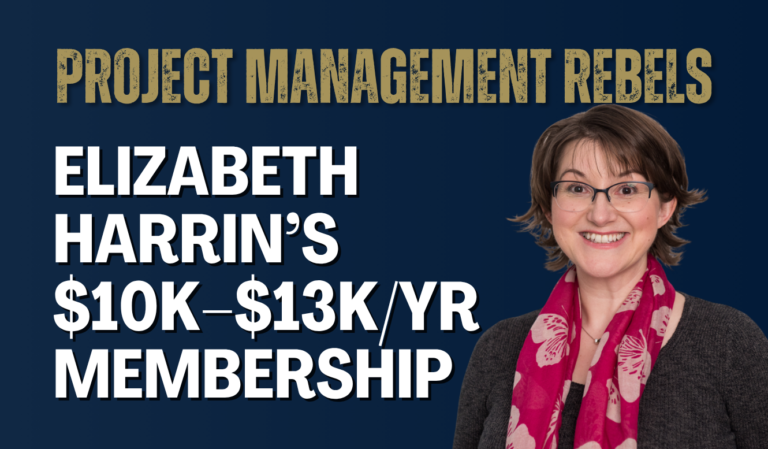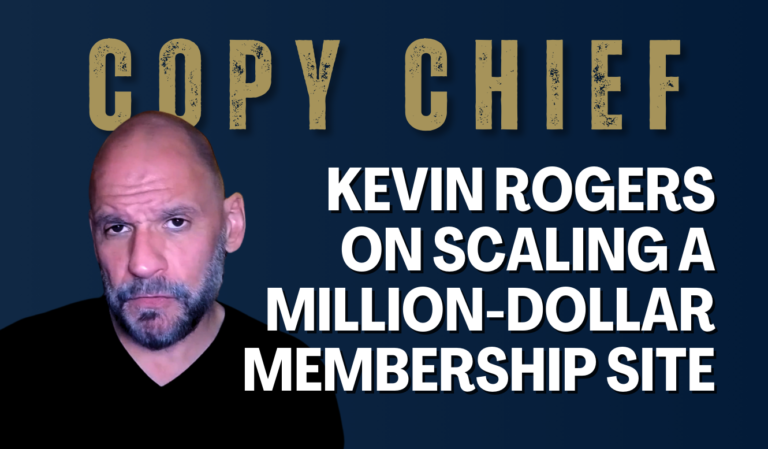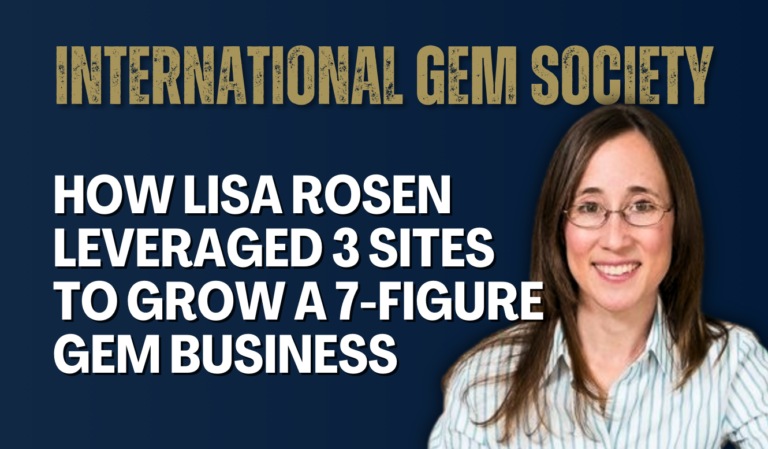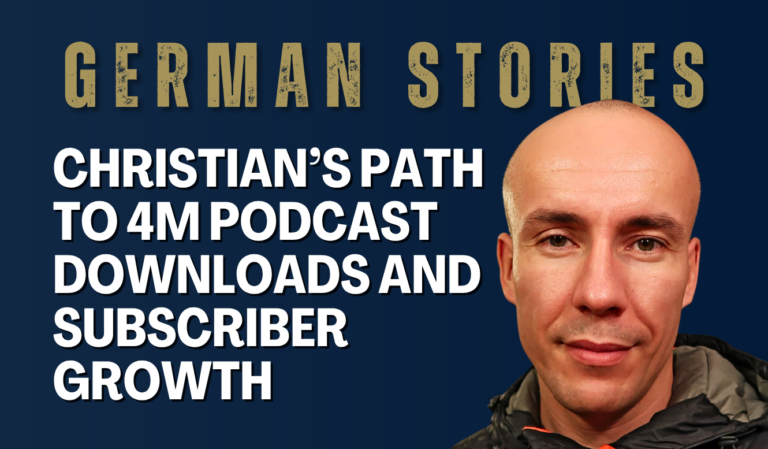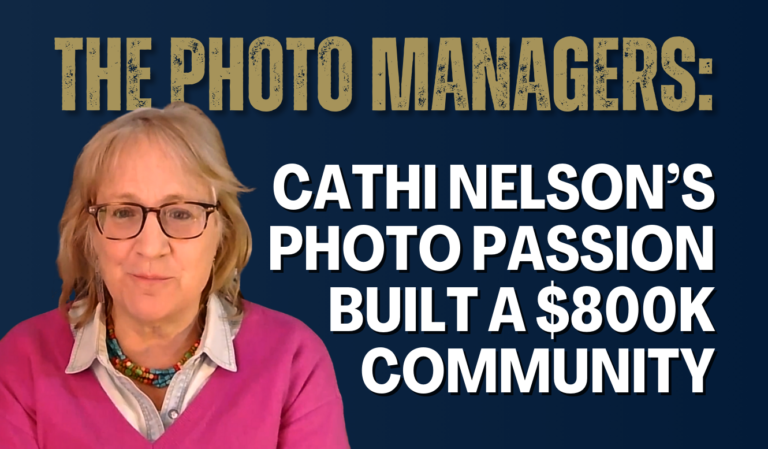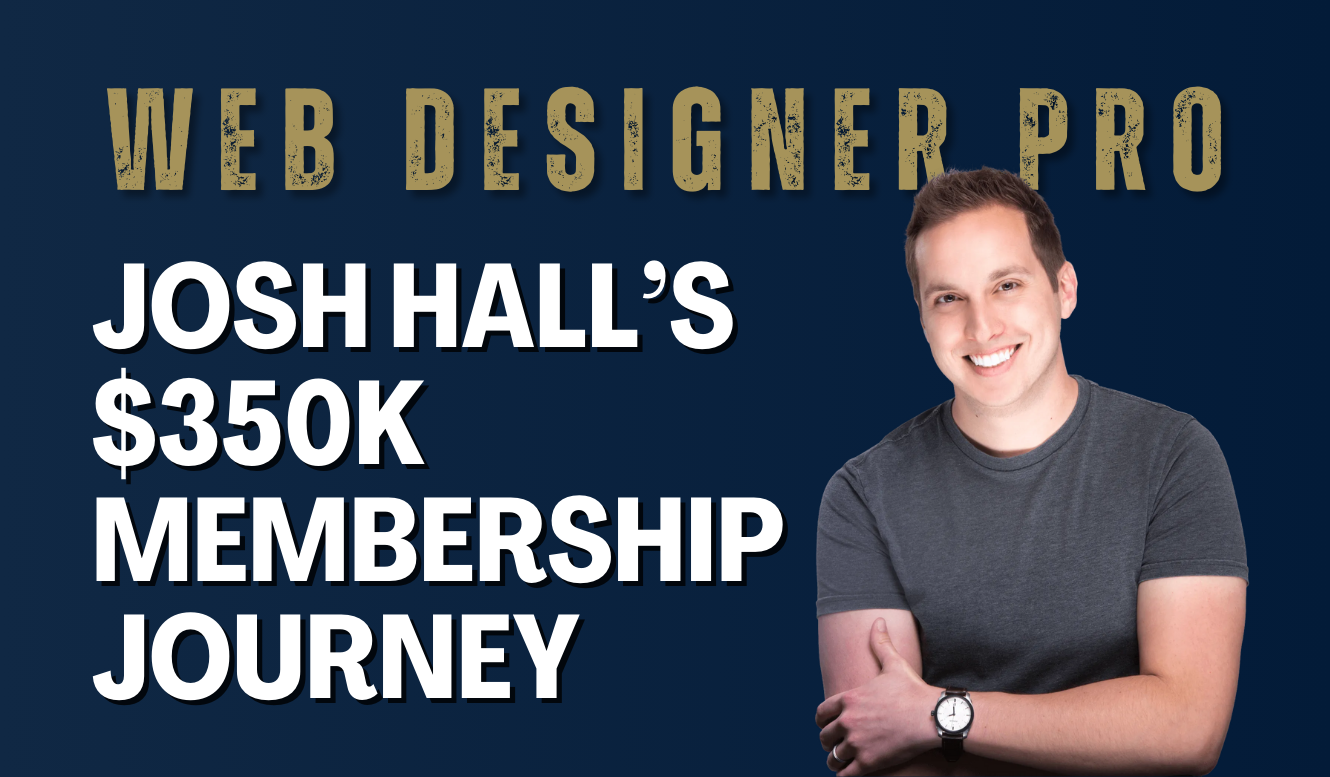
Get case studies from successful membership site founders sent straight to your inbox each week. Click the button below.
Who Are You and What Is Your Background?
I’m Josh Hall, the founder of Web Designer Pro, a membership community for web designers who are serious about building and growing their web design businesses. This membership primarily focuses on the business side of web design.
A brief overview of what led me to become a community builder and build this membership site is that I was a freelance web designer for nearly a decade. Eventually, I got to the point where I started giving back to my local community. My high school actually had an advisory program, and we were able to sit down with media and design students and share what we were doing as creatives and designers. I loved it. I absolutely loved talking about graphic design and website design and inspiring the next generation.
That’s what gave me the itch to teach. I eventually started a YouTube channel under my personal brand at joshhall.co and started posting YouTube tutorials about websites and what I was doing in web design. Eventually, that led to me doing courses. My online courses just blew up, especially in the period around 2020 when COVID came; my sales skyrocketed.
I went headfirst into course creation and eventually sold my web design agency to one of my students, and was all about selling one-off courses. Then, I wanted to build recurring revenue, which was the start of the membership. Originally, I launched it in the fall of 2020, and it was called the Web Design Club. It was the next step for many of my students who went through some of my courses but wanted community and more access to me for coaching. That was the genesis of what eventually became Web Designer Pro.
What Is Your Business and When Did You Start It?
Again, it officially started in the fall of 2020 and was called the Web Design Club, which was the next step for my students. I really wanted to bring people together. It was twofold.
One reason was that I wanted to build recurring revenue. In that model with course sales, you live and die by launches. With the membership model, it gave me a chance to slowly build up some recurring revenue with largely current students and folks who had already purchased one or more of my products or courses.
That’s how it started.
What Was Your Professional Situation Right Before Starting the Membership Site?
A couple of years into having the Web Design Club alongside my one-off courses, I realized there was a huge need to combine those things. I found that many of my students who had been through all or most of my one-off courses and then joined my membership at the time, which was called the Web Design Club, got community and coaching support from me in the way of weekly coaching calls and DM access. Those were the students who were killing it and getting really good results.
It dawned on me, for a couple of reasons, that I eventually made a pivot to go from a courses-first model to a membership-first model. A large part of it was that the results of the students who had everything—courses, community, and coaching—were superior. The other aspect was that I saw a big shift in the course market.
As I said, at the beginning of 2020, my course sales were booming. All through 2021, they continued to grow. But once we hit 2022, I noticed a shift in the online course market. Maybe it was saturation from so many online courses. Maybe it was because we had such a big spike when everyone was home, and it was either nothing to do or the perfect time for somebody to start their side hustle. Maybe it was a skewed reality of how successful online courses were. Whatever the reason, my course sales started to dip in revenue, and launches weren’t as big as they used to be.
I realized I wanted to make this more sustainable. That was my situation right before starting what eventually became Web Designer Pro, taking the Web Design Club, which was very small at the time, with 50 members or so, and essentially cutting off my one-off course sales and putting it all together. You would then find courses, community, and coaching. I went with the brand Web Designer Pro when I trademarked that and purchased the .com.
How did you get the idea to start this particular membership business?
It was initially based on the idea of building some recurring revenue and, again, bringing my students in my one-off courses together.
Most importantly, I’m glad I started off small originally because I found out that I really liked it. I don’t think everyone is built to be a community builder, but I really enjoyed it. So, I figured if I could do it on a small level, and once I decided to bring in my courses and make that my main model, pivoting from courses-first to membership-first, that’s why I decided it was going to be a good fit.
I knew I liked it; students were getting results, and I felt it was a lot more stable. I knew it was going to be a slow-rise, slow-growth approach, but a few years later, looking back, it was by far the best decision I’ve ever made. Painful initially because there were some challenges.
What Was the Major Challenge You Faced in Starting or Scaling It and How Did You Overcome It?
I’ll say, instead of starting or scaling it, pivoting, which was completely changing my offer. My offer went from selling courses one-off to selling the courses as part of my membership.
Initially, I didn’t turn off my one-off course sales. I gave people the option to either buy a course with lifetime access or get it inside of their membership in Web Designer Pro for a lesser fee. The price points were not ideal for that setup. They were still high-end price points for both the courses and what eventually became Web Designer Pro.
I learned in many ways that it’s better to have one clear offer instead of giving people multiple choices. If you’re going to have multiple offers, like a couple of different ways to purchase something, make sure there’s a clear distinction between a lifetime access version and a rented version, basically.
Had I gone back, I would have made a courses-only tier available in Web Designer Pro, which is what we have now for a very cheap or lower-end price, and kept the lifetime sales more high-end.
That was a challenge because my course sales dropped dramatically, and it was a slow-growth and slow-burn strategy for Web Designer Pro. It was very painful for about a year as I began to shift through that model and pivot.
What Was Growth Like Over the First Couple of Years?
It is different just because initially, this membership in its first version was not my main offer. It was a backend offer to current students, but in 2023, when I morphed the Web Design Club into Web Designer Pro, and it became the main membership offer, it started to grow slowly but steadily. The first year in 2023, was very painful, as I mentioned, because it was very slow growth with a membership, and I had to learn how to reduce churn and become a better community builder. My one-off course sales nearly dropped completely overnight.
It was slow growth, but in the fall of 2023, things started to turn around. That’s when things started to compound, and the community took on a life of its own. I got better as a coach there, and most importantly, I got used to selling Web Designer Pro, the membership, as my main offer.
I was going back and forth between selling courses and selling a membership. I just went all-in on selling a membership, which is Web Designer Pro. I immediately started to see a steep upward growth revenue-wise, which was huge, huge, huge. It’s what kept me going, honestly, because I knew I had the goods, and I knew people were getting results. I just needed to learn how to sell a membership better.
What Was Your Specific Strategy for Growing It and How Did You Implement That?
I have a couple of main channels for growing Web Designer Pro now, and even back then, the same channels.
Number one is my podcast. I host the Web Design Business Podcast, which is now the number one podcast for web design and specifically the business side of web design. I’ve been doing that since 2019. That’s always been a huge channel. I’d say 99% of people who come into Web Designer Pro, when they do their intro, mention the podcast. They say they’ve been listening to the podcast or have listened for a while and finally made the jump. That’s been huge.
Apart from doing guest interviews and solo episodes, I also invite Web Designer Pro members who are up to something really cool or maybe have a success or a case study, and I’ll feature them on the podcast, which always ends up being good converters to my membership.
The other big channel I have is my YouTube channel. I do tutorials and videos based on different tools I use, both specific to web design and, now even more community building. I also post the video versions of my interviews on my YouTube channel, which is under my personal brand at joshhall.co. That’s been huge, too. It’s a bigger discovery channel; I definitely get in front of a lot more people that way. But I try to get them into the podcast in some way because my podcast is the biggest converter.
I also have some free lead generators, depending on where people are in their web design business, and those have helped as well. Those are some of my main channels for that.
Other things I’ve done are being a part of summits. Online summits in the web design and design space have always been big ones for me. I try to back that up with a usually low-end offer, and then they get access to my community, the courses tier, and that gets them going.
One really important thing to note is that I shifted my business at the end of 2024 from just one tier. It was $199 a month to get all my courses, community, and coaching. That built up to nearly $300K in annual recurring revenue. We had about 200 members at that level, with some grandfathered rates from the first founding members.
But I decided to open up tiers because I was at capacity coaching, and I wanted to grow it and make it sustainable. I had many people say, “I wish I just had access to the courses for a bit because I don’t need coaching, or I’m not ready for the community quite yet. I just want courses.” Some people just want community. Some people just want courses. Some people just want coaching.
Now, I have that as an option. There are three tiers currently at the time of recording this. The course tier is $49 a month. The community tier, which includes all the courses and all the training resources, is $99 a month. If you want all of that and access to weekly coaching calls with me, which are more group coaching style, and direct DM access to me for coaching whenever you need it, that level is $199. So it’s $49, $99, and $199.
How Much Money Is the Business Making Now and What Is the Revenue Mix?
Currently, at the time of recording this, we are just shy of $350K ARR (annual recurring revenue). We have about $28,000-plus in monthly MRR. Now, we do have an annual option for the top tier, so that sometimes comes in waves. We’ll have waves of annual signup renewals, so there’s a big chunk of revenue, and then some months are a little less.
The way this mixes out is that I’m only a few months into having launched those tiers. I’ve had plenty of the coaching tier folks downgrade who didn’t need coaching, and then I’ve had some people upgrade. Currently, about 75% of the revenue is from the coaching tier at $199 a month.
The other two tiers are nearly neck and neck revenue-wise, which are the $99 community tier and the $49 courses tier. We have doubled the amount of people in the courses tier, but that makes sense because it’s half the price point. We have half as many people in the community tier, and that makes up just as much revenue as the courses tier.
We have a little over a hundred members in the courses tier, just over 50 members in the community tier, and about 150 members right now in the coaching tier. We’re sitting at about 300 members altogether. All those things have led to this now being a $350K ARR business, which I’m happy to talk about goals for in the last one here.
If You Were Advising Someone on Starting a Similar Company Today, What Would You Tell Them Is the Key Area to Focus On and Which Strategy Should They Use to Address It?
If you’re going to build a membership, you need to ask yourself: Is this membership a community? Is it a program that is more coaching-based and maybe timed, like a six-week boot camp or a six-week sprint, or maybe an annual type of program that has a really clear start and finish? Is it an information site, or is it some sort of SaaS site where people get access to something like a tool or a framework that’s rented?
You need to be really clear because a membership site is not always a community, and a community is not always a typical membership site. You really need to be clear on what this membership site is. The commonality is that they’re all recurring revenue options. They are a subscription business, which is amazing, but they often become a slow-growth burn depending on the price points.
I will say, strictly from the community standpoint, which my community is—a mix of an information membership with my courses, a community membership, which is key, and a coaching membership—one thing I can tell you is that as a community builder, slow growth is okay. It’s actually probably preferred to go that way.
I started Web Designer Pro, originally called the Web Design Club, with, I think, 32 or 33 founding members. I was really disappointed initially because I wanted over a hundred, but that ended up being a blessing in disguise because I was able to get to know these people really well. Thirty-plus people are plenty to get to know well. That’s a lot of people to think about constantly and have in your world on a coaching-type level.
I got to know them really well; the core was born, and I think we’ve probably got at least 80% of those people from that first wave still in Web Designer Pro today. We obviously did something right in those first few months with a really small but mighty group together. That became the core. So, build the core first, especially if you’re a community, and slow growth is totally fine.
What’s Next for You?
We’re at $350K right now. I would like to grow this to $500K ARR (annual recurring revenue). That’d be nice monthly, but that sounds like a lot. That’s my goal right now. The main way I’m doing that is with the scalability of the courses and the community tier because the coaching tier, I’m quite involved with. I have limited capacity on that. I really can only take about 150 people at that level.
We’ll be moving to a waitlist with that currently and opening spots up, but folks who want to join my courses, we could have thousands of people in there because they’re not in the community forums yet. On the community side, I’m still very active with all those members in the forums and on monthly calls, but it’s just not as direct. They don’t get DM access to me for coaching, and they don’t get our weekly coaching calls, which are already booked up at this point.
That’s what’s next for me: scaling this with the lower tiers up to $500K is the goal over this next year. By the end of 2025, I want to see that number of ARR, expected ARR through the following year, up to $500K. That’s my goal.
I’m going to be doing that by continuing my podcast, continuing YouTube, having better low-end offers and lead generators to get people some quick wins and what they need to know to make them feel like Web Designer Pro is a no-brainer, which it absolutely is, especially on the two tiers, which are very affordable for everything you get.
I’m also going to be doing better at email sequences and nurture sequences for people on the courses tier to encourage them to come up to the community because they often don’t know what they’re missing. The same thing goes for coaching: when we have opportunities, I’ll hit up the most active community members and say, “Listen, I think you’re ready for coaching. Here’s an offer to get going with this.”
Those offers may change, whether it’s a discount or a promo or maybe a few months discounted; I’m working through that. Those are the plans to get up to $500K ARR. That is the goal for my membership community, Web Designer Pro.
Get case studies from successful membership site founders sent straight to your inbox each week. Click the button below.

